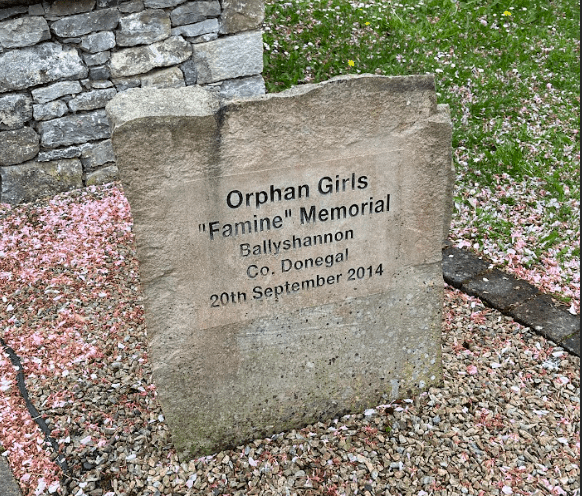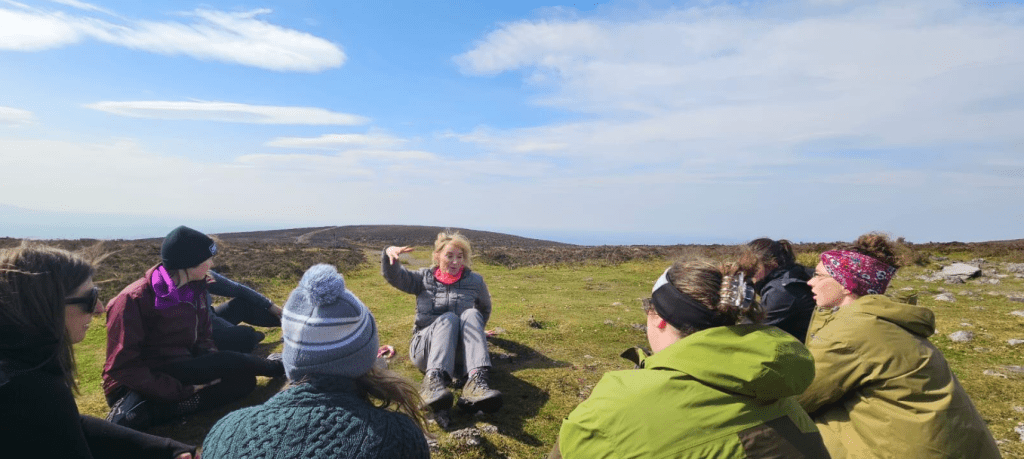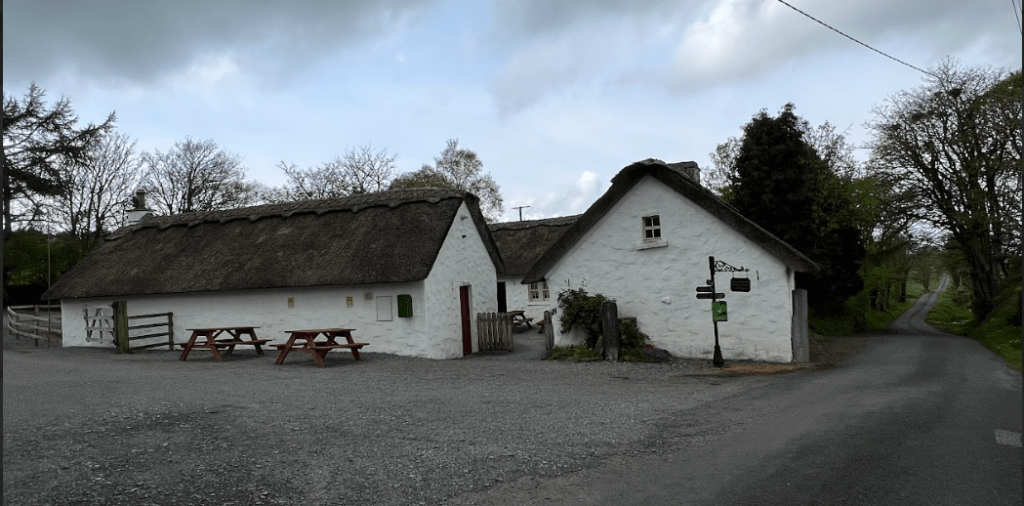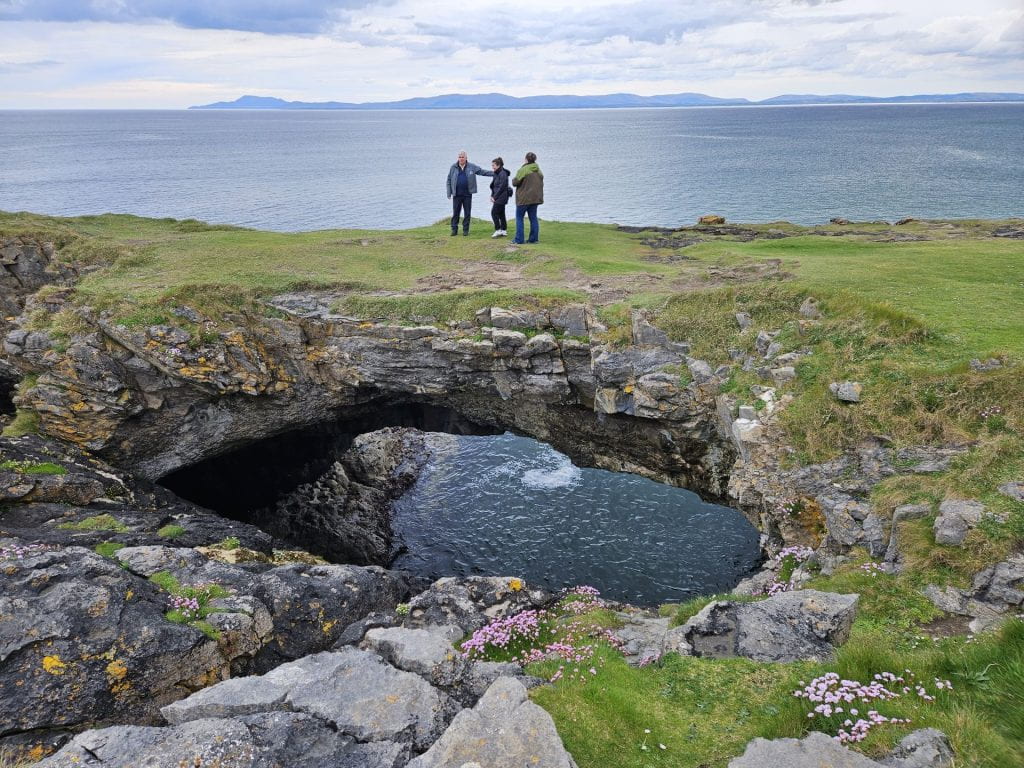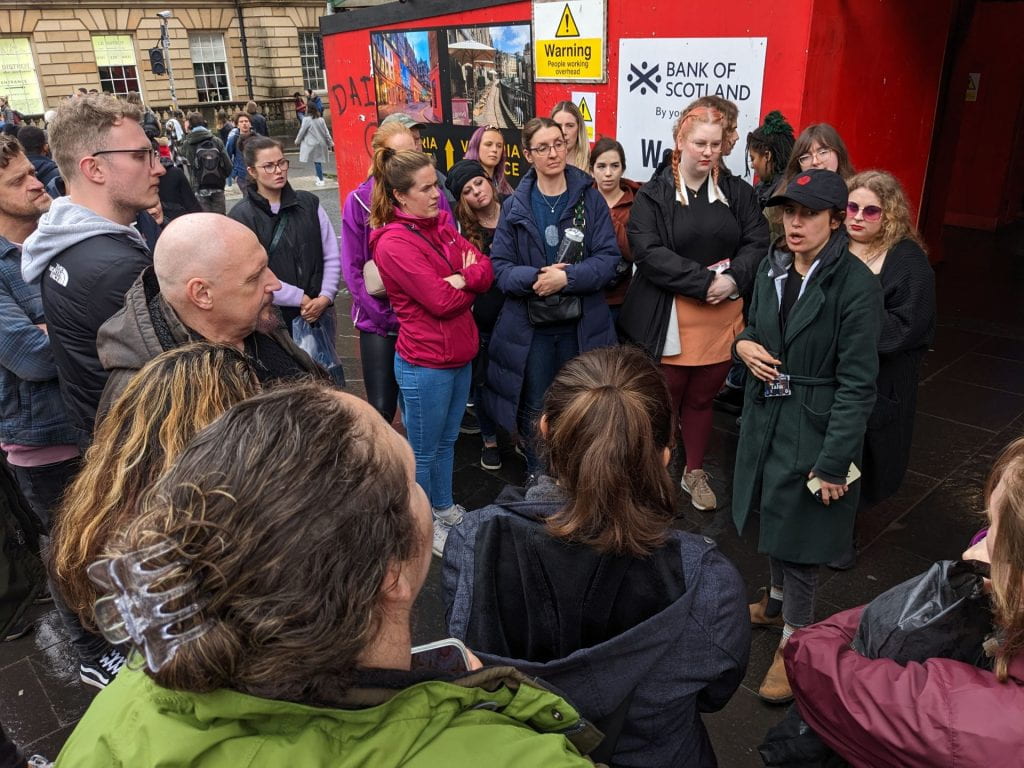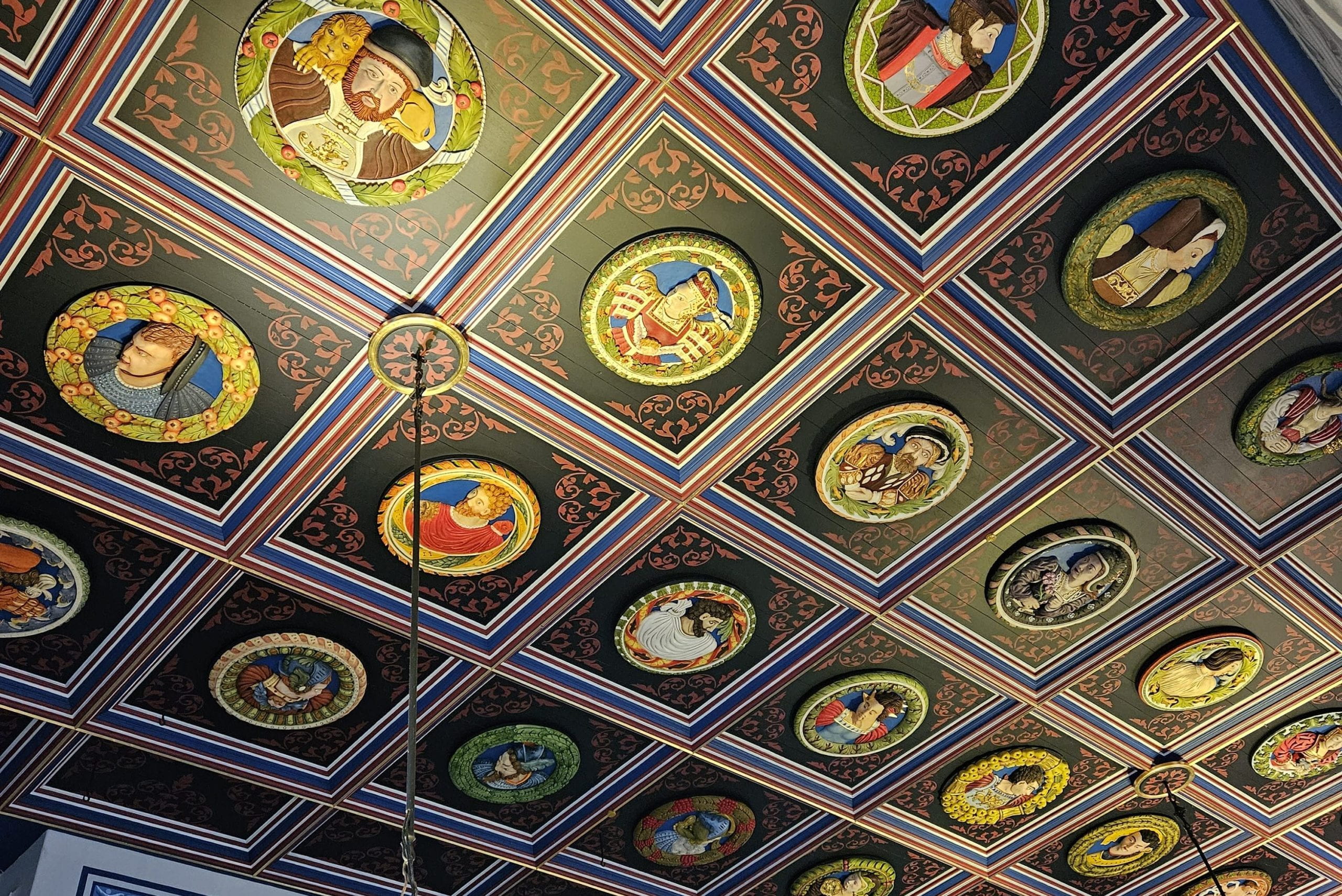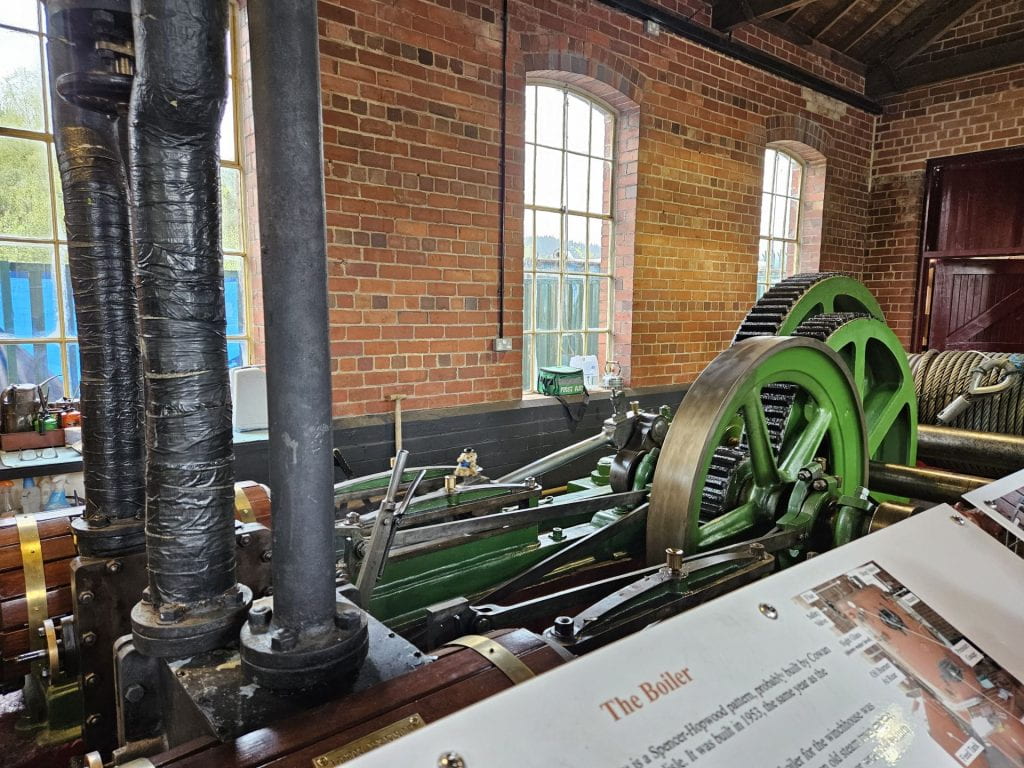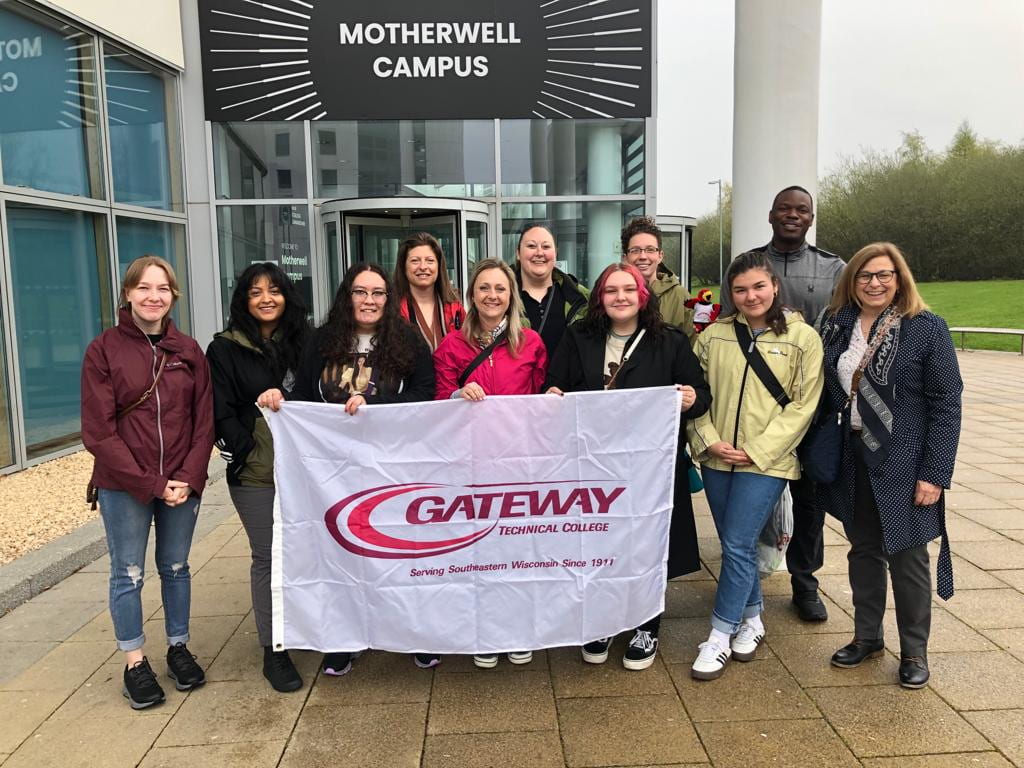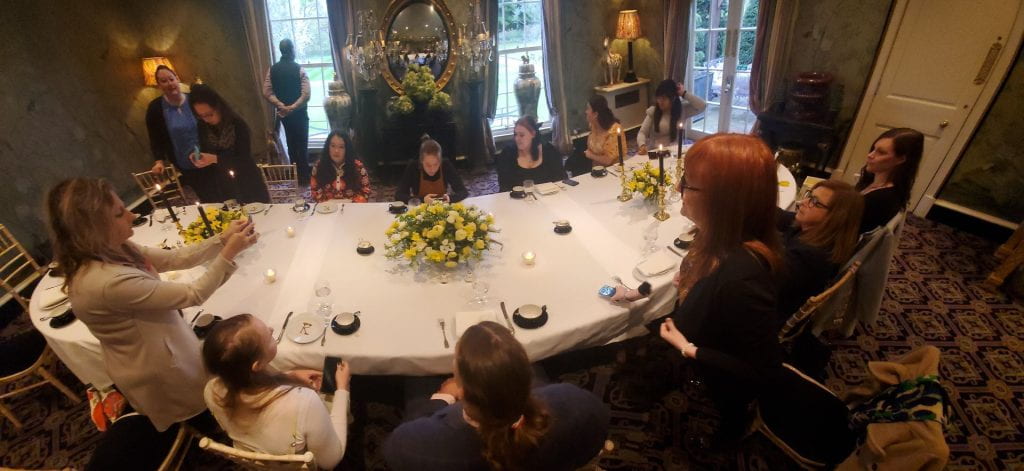
Our day began with breakfast at the Bentley and meeting up with Hazel Scott and a few International Education students from New College Lanarkshire who will be coming to visit in late May. Our group took the train into Edinburgh and hailing a few cabs to Prestonfield House. This living monument was built by the King’s architect Sir William Bruce for the Sir James Dick. It was the Dick family private residence until 1958 when it became a hotel. It was purchased in 2003 by restaurateur James Thomson who has spent two decades restoring it to its former glory. His unique, eloquent, and opulent style can be seen throughout the hotel.

Our visit began with a Master Floral class taught by Prestonfield House’s resident florist. An experienced and creative designer, he took us through the steps to create central floral arrangements using flowers that are found locally and in-season.






After our class was complete, the owner of the Prestonfield House, James Thomson greeted us at our adorned table. He spent a great deal of time telling us about the history Prestonfield House and his journey with the property, since acquiring it in 2003. After our initial discussion, Mr. Thomson lead us around the grounds discussing the property, its history, and its future.




This former horse stable has played host to 100s of different events throughout the last two decades. Besides the weddings that one would expect to host here, The Stables has played host to Royal Teas, Ambassador socials, rock concerts, plays, and recitals.

This tea house was constructed to the Queen Mother could enjoy her tea in the garden and stay out of the rainy, cool weather that Scotland is so famous for


After our historical tour of the grounds, our table set for tea awaited us. What an amazing treat.

The company was good. The atmosphere was opulent. The food was incredible! The menu was not only seasonal but all ingredients from within the region. A host and a meal never to be forgotten.

What an experience we had at the Prestonfield House! James Thomson was a gracious and humble host to our group. Unfortunately, we couldn’t afford the room rates for an overnight, so we caught our evening train back to Motherwell to rest our heads during last night in Scotland.





